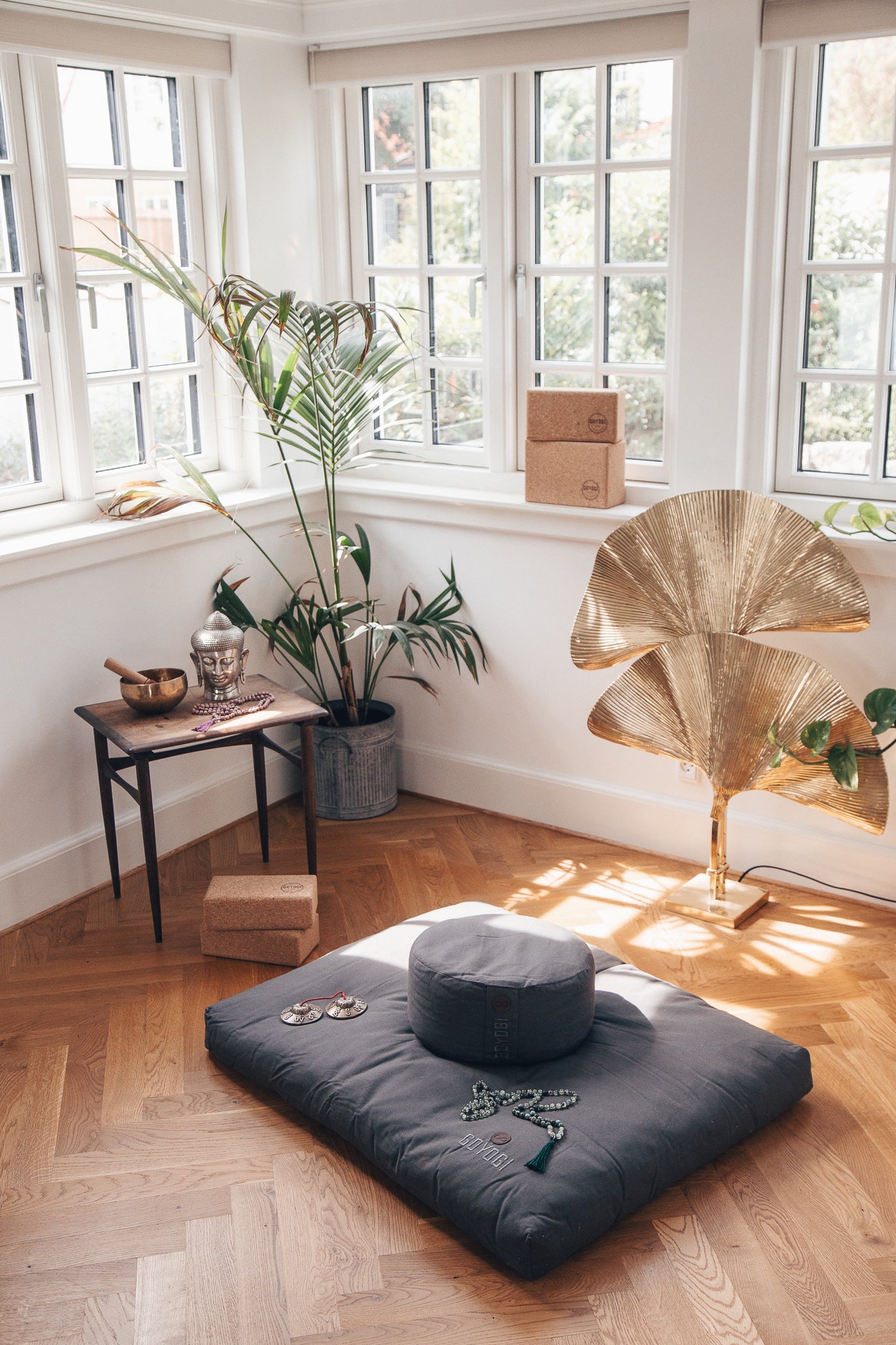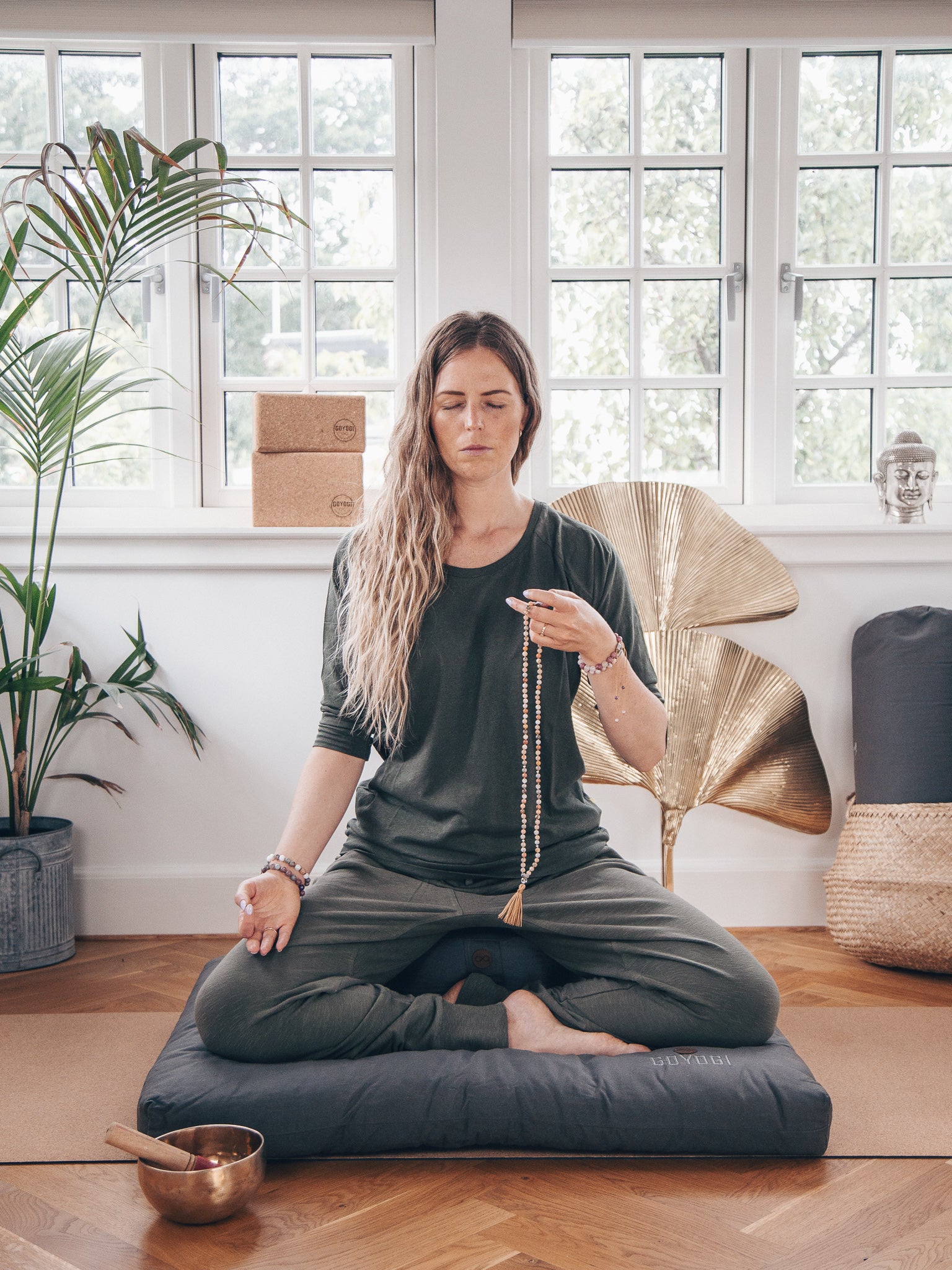
Find a suitable space and set your intention
Choose a suitable space for your practice. Maybe you are lucky enough to be able to literally find an entire room, but a small space, a nook or a square meter of your living room or bedroom can easily be enough. The most important thing is to dedicate the chosen space to your practice and also to let others in your home know that you need peace and quiet here. "Do not disturb" must be written in invisible letters :)
A good way to define your space is, for example, by using a zabuton - the large floor cushion. It almost automatically creates a defined space for your meditation.

Choose your tools carefully
In order to create the ideal space for your meditation, it may be a good idea to think about how you want to meditate. There are several ways to approach meditation and mindfulness.
Do you want to sit up in a strong and calm sitting position, for example on a meditation cushion? Or do you prefer to lie down or be 'stacked up' in a delicious restorative resting position?
Whatever you are into one or the other, make sure you choose the right pillows, bolsters, mats or eye pillows, so that you get off to a good start. It is important to sit / lie down well and correctly so that you do not get pain in your legs, knees or lower back. It could potentially cost you the desire to meditate and that would be a shame.

Set a mood and show up in your space with dedication and intention
It can also be both cozy and beneficial to create a calming and relaxing atmosphere in your meditation space with, for example, incense or fragrant aromatherapy diffusers with lavender or ylang ylang.
Maybe a singing bowl can help start your meditation, or maybe you put on some soft music?
Show up with presence, intention and dedication and set a goal for your practice.
Three times 20 minutes a week? Every day for 10 min.?
The most important thing is that you are not overambitious. Start with something you know you can stick to that will give you a sense of success.
Great fun!
Inspiration for your space
Calm Crescent Halvmåne Meditationspude - Dark Olive

Alt du behøver i din yoga praksis
Velkommen til vores basis sortiment af udstyr og yoga-wear, hvor vi har...






